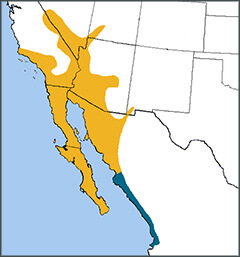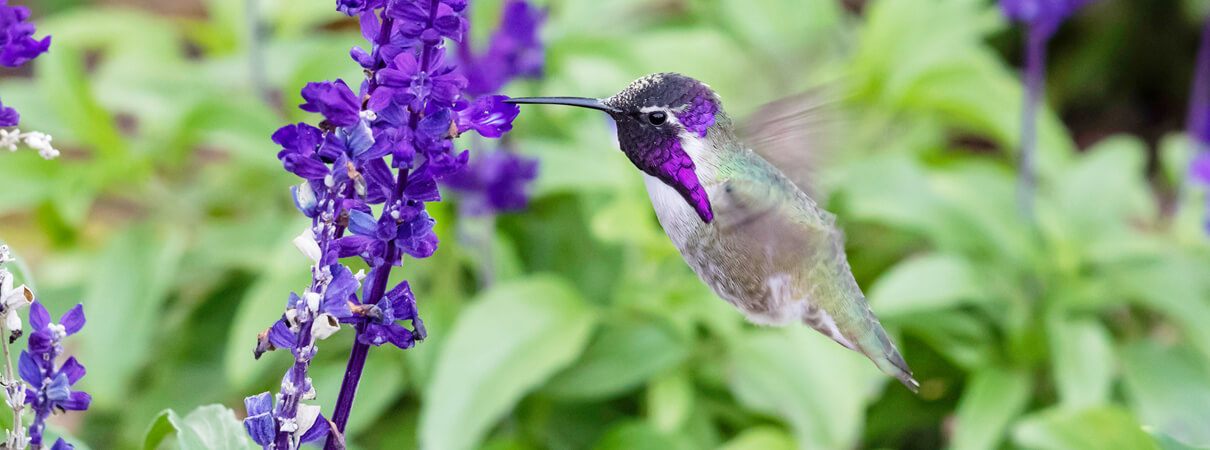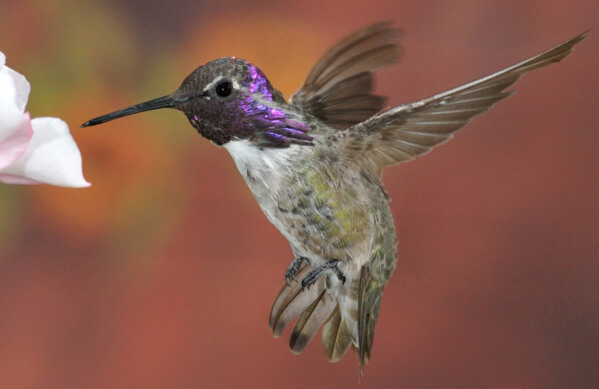 Tiny Costa's Hummingbird—named for early hummingbird collector Louis Costa—reaches its maximum size at 3.5 inches, making it one of the smallest U.S. breeding birds. Found in hot, dry habitats like the Sonoran and Mojave deserts, the species is an important pollinator of desert plants and cacti, particularly red penstemon.
Tiny Costa's Hummingbird—named for early hummingbird collector Louis Costa—reaches its maximum size at 3.5 inches, making it one of the smallest U.S. breeding birds. Found in hot, dry habitats like the Sonoran and Mojave deserts, the species is an important pollinator of desert plants and cacti, particularly red penstemon.
The birds migrate and nest in February or March, when desert flowers are most abundant and heat has not yet peaked. They wander if resources become scarce or temperatures climb too high. But unlike Rufous and Ruby-throated Hummingbirds, Costa's are short-distance migrants, moving only as far south as northern Mexico in winter.
Costa's Hummingbird Survival
Hummingbirds have high energy needs and unlike most other birds, lack insulating down feathers. To survive cold temperatures, the birds can enter a state of torpor, lowering internal thermostats to reduce body temperature and slow heart rate. In the case of Costa's Hummingbird, this can mean reducing the heart rate from a normal daytime rate of 500-900 beats per minute down to 50.
Sign up for ABC's eNews to learn how you can help protect birds
Although the species' population is currently stable, loss of habitat may become a problem for Costa's Hummingbird, as it is for other hummingbirds like the rare Marvelous Spatuletail and Esmeraldas Woodstar. Urbanization, agriculture, and competition from Anna's Hummingbird are edging Costa's from some of its former habitat, especially coastal areas and desert scrub.

Costa's Hummingbird, Arizona. Photo by David G. Hayes, Shutterstock
Introduction of non-native buffelgrass, or African foxtail grass, is another problem. Planted for erosion control and to feed cattle, this aggressive plant outcompetes the native flora needed by the birds.
Costa's Hummingbirds will visit hummingbird feeders and backyards with desert-friendly landscaping that includes native flowers. To some degree, these landscape features may help individual birds survive habitat loss in the surrounding areas.
The Hummingbird Effect!
In his recent book, Steven Johnson coins the term “Hummingbird Effect” to make the point that innovation in one realm can trigger unpredictable and unexpected advancement in others. We not only agree, but have dozens of examples of how great American bird conservation projects make considerable, sometimes unexpected contributions to other important causes including amphibian conservation, human health, food safety, climate change, water conservation, and home energy savings.
Donate to support ABC's conservation mission!



















































